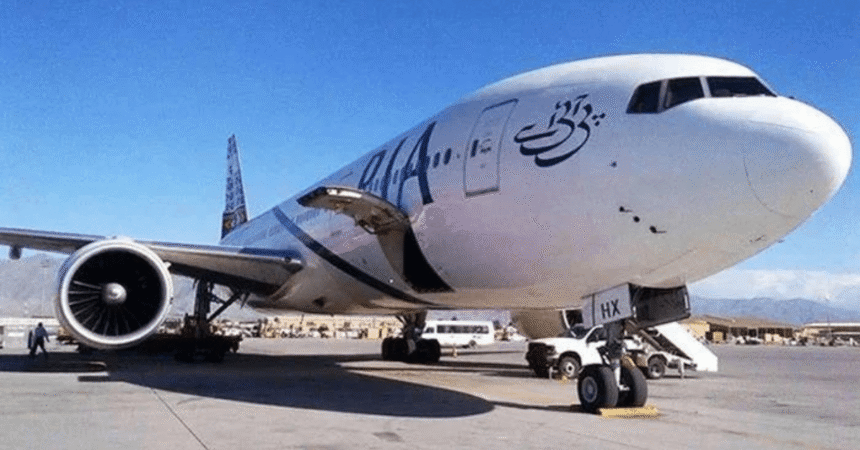A recent incident involving a Pakistan International Airlines (PIA) flight highlights the critical importance of pilot training and emergency procedures in aviation safety. Flight PK-213, which was en route from Karachi to Dubai, experienced a severe hydraulic system failure that caused the aircraft to descend a staggering 26,000 feet in just six minutes. This event underscores the unpredictable nature of air travel and the crucial role of skilled pilots in managing emergencies.
Incident Overview
The journey for flight PK-213 began as a routine flight from Karachi, with passengers onboard expecting a smooth trip to Dubai. Approximately one hour into the flight, while cruising at an altitude of around 36,000 feet, the aircraft’s hydraulic system suddenly malfunctioned. This failure is particularly alarming because the hydraulic system is vital for controlling various aircraft functions, including flaps, brakes, and landing gear.
The sudden drop in altitude shocked both the passengers and crew. According to the PIA spokesperson, the pilot acted swiftly, declaring an emergency to ensure the safety of all individuals aboard. The aircraft’s rapid descent raised immediate concerns about passenger safety and the potential for a catastrophic event.
Emergency Response
Upon detecting the hydraulic failure, the pilot engaged emergency protocols immediately. With a calm demeanor, he communicated with the flight crew and prepared them for potential scenarios, ranging from an emergency landing to mid-air repairs. The gravity of the situation required both leadership and technical skills.
At approximately 10,000 feet, the pilot made contact with Muscat Air Traffic Control. Establishing communication with air traffic control is a crucial step in managing emergencies, as it provides pilots with access to real-time information and guidance from experienced professionals on the ground. The pilot requested radar services to assist in navigating the aircraft safely.
While air traffic control provided support, the pilot focused on diagnosing and resolving the hydraulic issue. His extensive training and experience came into play as he worked through the procedures for troubleshooting hydraulic failures. The ability to remain calm under pressure is essential for pilots, especially during life-threatening situations.
Technical Aspects of the Hydraulic System
To understand the gravity of the situation, it is important to consider how hydraulic systems operate in aircraft. Hydraulic systems use fluid pressure to operate various components, including landing gear, brakes, and flight control surfaces. A failure in this system can severely limit the pilot’s ability to control the aircraft.
In the case of flight PK-213, the failure meant that the pilot lost critical functions that would normally assist in maintaining altitude and stability. This posed significant risks, including the potential for a complete loss of control. Pilots are trained to handle such situations, but the challenge lies in executing these procedures while ensuring the safety of passengers and crew.
Mid-Flight Repairs
Despite the complexity of the situation, the pilot managed to perform mid-flight repairs on the hydraulic system. This is a rare and challenging maneuver, as it requires a deep understanding of the aircraft’s systems and the ability to implement solutions quickly. The pilot’s ability to troubleshoot effectively while in a high-pressure environment showcases the level of training and expertise required in commercial aviation.
Using onboard manuals and relying on his knowledge, the pilot was able to stabilize the aircraft. He maintained a low altitude for about an hour, which allowed him to continue flying while ensuring that the hydraulic system was functioning at a minimum capacity. This decision was critical for the safety of the aircraft, allowing the crew to prepare for landing without further jeopardizing the passengers.
Safe Arrival in Dubai
After successfully managing the hydraulic issue and stabilizing the aircraft, the pilot proceeded to navigate toward Dubai Airport. The descent and approach to the airport required precision and care, particularly given the prior challenges. Upon landing, the aircraft underwent a thorough inspection by ground crews to evaluate the hydraulic system and ensure that all components were functioning correctly.
The successful handling of this emergency situation highlights the importance of pilot training and the effectiveness of safety protocols in commercial aviation. After the inspection, the Airbus A320 was cleared for its next scheduled flights to Islamabad and Skardu, demonstrating that the airline’s operations could continue despite the earlier incident.
Challenges Facing PIA
Following the incident, the PIA spokesperson mentioned that the airline is currently facing a shortage of aircraft parts due to administrative challenges. This shortage can significantly affect operational efficiency and safety. Airlines rely on a steady supply of parts to maintain their fleets, and disruptions can lead to extended downtimes for aircraft.
These administrative challenges can stem from various factors, including bureaucratic inefficiencies, supply chain issues, and financial constraints. The aviation industry operates under strict regulatory standards, and any delays in obtaining necessary parts can hinder an airline’s ability to maintain its fleet and respond effectively to emergencies.
The Role of Pilot Training
The successful resolution of the hydraulic system failure on flight PK-213 is a testament to the importance of comprehensive pilot training programs. Pilots undergo rigorous training that includes simulations of emergency scenarios, allowing them to develop the skills necessary to handle unexpected situations effectively.
Training programs encompass various aspects, including technical knowledge of aircraft systems, emergency procedures, and crew resource management. The ability to work collaboratively with co-pilots and cabin crew is crucial during emergencies, as effective communication can significantly improve outcomes.
Furthermore, airlines must continuously assess and enhance their training programs to adapt to new technologies and challenges in aviation. The incident involving flight PK-213 underscores the need for ongoing training and preparedness to ensure the highest levels of safety for passengers.
Passenger Safety and Well-Being
During emergencies, passenger safety is of utmost importance. The cabin crew plays a vital role in maintaining order and ensuring that passengers are informed and calm. The quick response of the flight attendants during the hydraulic failure helped reassure passengers, contributing to a sense of safety even in a precarious situation.
The crew’s ability to communicate clearly and effectively is essential in managing passenger anxiety during emergencies. It is critical for flight attendants to be trained in emergency protocols, as they are often the first line of communication between the flight crew and passengers.
In the case of flight PK-213, once the situation was stabilized, the cabin crew ensured that passengers were updated on the status of the flight and reassured them that the pilot was managing the emergency. This communication is key to fostering trust and confidence in the crew’s ability to handle the situation.
Regulatory Oversight
The aviation industry is heavily regulated to ensure safety and security. Regulatory bodies, such as the Federal Aviation Administration (FAA) and the International Civil Aviation Organization (ICAO), set stringent standards for pilot training, aircraft maintenance, and emergency procedures. Compliance with these regulations is crucial for airlines to operate safely and efficiently.
In the aftermath of incidents like the one involving flight PK-213, regulatory authorities often conduct investigations to determine the causes and contributing factors. These investigations help identify areas for improvement and reinforce safety protocols across the industry.
The insights gained from such incidents can lead to updates in training procedures, maintenance protocols, and operational guidelines, all aimed at preventing similar occurrences in the future. Continuous improvement is a hallmark of the aviation industry, driven by lessons learned from past experiences.
Media Coverage and Public Perception
The media often plays a significant role in shaping public perception of aviation safety. Incidents like the hydraulic failure on flight PK-213 can attract considerable attention, prompting discussions about airline safety and the effectiveness of emergency response protocols.
Media coverage can vary, with some outlets focusing on the heroism of the pilot and crew, while others may highlight systemic issues within the airline or the industry at large. Public perception is influenced by how well airlines communicate during crises and how effectively they manage the aftermath of incidents.
For PIA, maintaining a positive image is vital, especially given the competitive nature of the airline industry. The successful handling of emergencies can bolster an airline’s reputation, while failures in communication or management can lead to negative perceptions that impact passenger trust and loyalty.
Future Implications for PIA
The incident involving flight PK-213 serves as a critical reminder of the need for ongoing improvements in aircraft maintenance and operational protocols. As PIA navigates its challenges, including aircraft part shortages and administrative hurdles, it must prioritize safety and efficiency in its operations.
Investing in maintenance infrastructure, streamlining administrative processes, and enhancing pilot training will be essential steps for PIA to rebuild and strengthen its operational capabilities. The airline’s ability to learn from incidents and adapt to changing circumstances will play a pivotal role in ensuring the safety and satisfaction of its passengers.
The Incident’s Aftermath
The successful resolution of the emergency on flight PK-213 is a testament to the dedication and expertise of the pilot and crew. It highlights the importance of preparedness, training, and effective communication in aviation safety. As PIA continues its operations, it must remain vigilant in addressing challenges and enhancing its safety protocols.
The airline’s commitment to learning from experiences and improving its operations will be essential for maintaining the trust and confidence of its passengers. In an industry where safety is paramount, every incident serves as an opportunity for growth and improvement.







